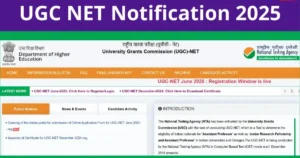Table of Contents
The environment has seen continuous degradation all around. The extinction of animals and exotic species of plants has made the problem visible on the wider stage. To address such issues there are different organisations and groups working on national and international grounds for the conservation of the environment and its ecological system as a whole. IUCN (International Union for Conservation of Nature ) is one of the major organisations working on this front. In this article, we will discuss it, its importance and vision in detail.
IUCN Overview
In an era marked by rapid environmental degradation and unprecedented species loss, organisations that champion the cause of conservation have never been more vital. One such organisation that stands at the forefront of global conservation efforts is the International Union for Conservation of Nature (IUCN). Founded over seven decades ago, the IUCN has played a pivotal role in shaping the world’s approach to safeguarding our planet’s biodiversity and natural resources.
| IUCN Overview | |
| Category of the organisation | International |
| Established on | 5 October 1948 |
| Headquarters | Gland, Switzerland |
| Ceo | Bruno Oberle |
| IUCN Red List of Threatened Species. | 1964 |
| Number of regional offices | 8 regional offices |
| Motto | United for Life and Livelihoods |
| India become a member of IUCN | 1969 |
What is IUCN?
The IUCN (International Union for Conservation of Nature ) stands as a global coalition, encompassing both governmental bodies and civil society organisations. With a membership exceeding 1400 organisations, the IUCN holds worldwide authority regarding the state of the natural world.
Established in 1948, the IUCN serves as a crucial platform for governments, non-governmental organizations, scientists, and experts to collaborate on safeguarding the planet’s biodiversity and natural resources. The IUCN’s primary mission is to assess the conservation status of species, promote the sustainable use of natural resources, and provide guidance for effective conservation policies and strategies.
Through its Red List of Threatened Species, expert commissions, working groups, and partnerships, the IUCN plays a pivotal role in influencing policies, supporting scientific research, and fostering public awareness to address pressing environmental challenges and ensure the long-term health of our planet’s ecosystems.
Objectives of IUCN
IUCN (The International Union for Conservation of Nature) strives to accomplish the following objectives:
- Furnishing scientific information concerning the global status of species and subspecies.
- Tackling concerning factors and promoting awareness about species and biodiversity extinction.
- Developing a framework for biodiversity conservation planning.
IUCN Red list
The International Union for Conservation of Nature (IUCN) Red List of Threatened Species is the world’s most comprehensive inventory of the global conservation status of plant and animal species. Its highlights are
- It follows a set of quantitative criteria to evaluate the extinction risk of species.
- The IUCN Red List Categories species into nine groups based on the risk of extinction from NE (Not Evaluated) to EX (Extinct).
- Species marked in the category of Critically Endangered (CR), Endangered (EN) and Vulnerable (VU) species are considered to be on the verge of extinction.
- It is the most authoritative guide to the status of biological diversity.
The list assessed 1,05,732 species, out of which 28,338 species are threatened with extinction.
IUCN Green List
The IUCN Green List is a global initiative for certification aiming to achieve and promote effective, equitable, and successful protected and conserved areas by emphasizing best practices and providing a benchmark for progress towards effective and equitable management. Its objective is to increase the number of protected conserved areas that are effectively and equitably managed and deliver conservation outcomes.
IUCN Nature 2030 Programme
IUCN (The International Union for Conservation of Nature)- nature 2030 is a programme set to monitor the impacts of climate change and guide the conservation and restoration of ecosystems to help mitigate the risk-causing factors. The Programme defines broad areas of work and sets aspirational targets as well as indicators to measure success. Its highlights are
- The programme is shaped by five priorities named people, land, water, ocean and climate.
- There are five pathways to transformative change: recognise, retain, restore, resource and reconnect.
Vision of the IUCN
The essence of the IUCN’s vision is encapsulated within its mission: “A just world that values and conserves nature.” This vision underscores the organisation’s commitment not only to preserving the environment but also to ensuring that these efforts contribute to a fair and equitable world for everyone.
-
Preserving Biodiversity
Central to the IUCN’s vision is the preservation of biodiversity. The organisation envisions a world where diverse ecosystems flourish, sustaining a vibrant array of life. This encompasses shielding species from extinction, restoring habitats, and promoting the sustainable use of resources.
-
Sustainable Development
The IUCN acknowledges that conservation is intricately linked with human development. Its vision aligns with the principle of sustainable development, wherein human activities harmonize with nature instead of exploiting it. This approach seeks to alleviate poverty, stimulate economic growth, and ensure environmental vitality.
-
Mitigating Climate Change
Given the urgency of climate change, the IUCN’s vision incorporates strategies to alleviate its impacts. This involves advocating for reduced greenhouse gas emissions, fostering ecosystem resilience, and aiding communities in adapting to shifting climatic conditions.
-
Empowering Indigenous Communities
The IUCN is resolute in upholding the rights and wisdom of Indigenous peoples and local communities. Its vision recognizes their role as custodians of many ecosystems and honours their traditional knowledge in conservation practices.
-
Inclusive Governance
The IUCN envisages a world where governments, civil society, and businesses collaborate seamlessly to address environmental challenges. Its approach emphasises inclusivity, wherein diverse perspectives contribute to effective decision-making.
Importance of IUCN
IUCN plays a pivotal role at the global level to preserve nature’s flora and fauna. Below are the major points highlighting its importance for the environment conservation
- Advancement of Environmental Scientific Research: IUCN promotes and participates in research initiatives to advance our understanding of ecological systems, species behaviour, and environmental challenges. This research is the foundation for effective conservation strategies and evidence-based decision-making.
- Provision of Data, Evaluations, Analysis, Standards, and Resources for Capacity Building: IUCN supplies comprehensive data, evaluations, analyses, standards, and resources for capacity building encompassing diverse facets of biodiversity and ecosystems. This information is indispensable for empowering governments, organisations, and communities to draft sound policies, make judicious choices regarding resource management, and establish priorities for conservation.
- Advocacy for and Execution of National Conservation Legislation, Policies, and Practices: At the national level, IUCN assumes a pivotal role in championing robust conservation legislation and policies. Governments get the benefits of its expertise and guidance in conceiving and executing effective legal frameworks for safeguarding the environment, with integration of conservation endeavours into national development blueprints.
- Oversight of Global Field Projects: IUCN administers a multitude of field projects across the world via its extensive network. These initiatives tackle an array of conservation challenges, encompassing habitat rehabilitation, species resurgence, and sustainable resource management. IUCN’s localised efforts directly contribute to on-ground conservation undertakings.
- Addressing Challenges in Oceanic and Polar Realms: IUCN assumes a vital role in confronting challenges affecting oceans and polar regions, including climate change, depletion of biodiversity, and pollution. Through measures such as marine protected areas and sustainable fishing practices, IUCN is steadfast in conserving marine ecosystems and advocating for judicious utilisation of marine resources.
- Supporting Effective and Equitable Protected Zones: IUCN extends support to nations and communities in creating and managing protected and conserved areas. The preservation of biodiversity, natural habitats, and sustainable land and resource utilisation holds paramount importance in these zones. The support of IUCN ensures that protected areas are not only effective for conservation but also fair for local communities.
- Preventing Species Extinction: Among IUCN’s most notable achievements is its Red List of Threatened Species, which evaluates the conservation status of species worldwide. By identifying species teetering on the brink of extinction, IUCN propels endeavours to arrest their decline through targeted conservation measures. In this way, the variety of life on Earth is safeguarded.
Conclusion
Amid a world grappling with environmental crises, the International Union for Conservation of Nature (IUCN) shines as a beacon of hope. Its significance cannot be overstated, given its role in guiding worldwide conservation efforts, shaping policies, and fostering cooperation. As the IUCN perseveres towards its visionary objectives, it serves as a reminder that the preservation of nature is not merely a noble pursuit, but an essential endeavour for the well-being of present and future generations. Through its unwavering dedication, the IUCN inspires each of us to participate in forging a sustainable and just world that values and protects Earth’s intricate web of life.



 UGC NET Notification 2025 Out, Exam Date...
UGC NET Notification 2025 Out, Exam Date...
 Last Minute Preparation Tips for MP TET ...
Last Minute Preparation Tips for MP TET ...
 GAT B Cut Off 2025, Check Expected, Cate...
GAT B Cut Off 2025, Check Expected, Cate...














